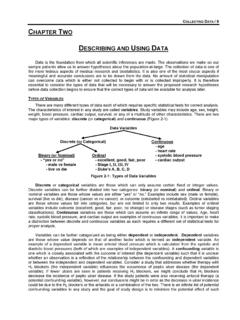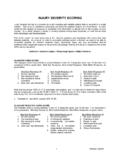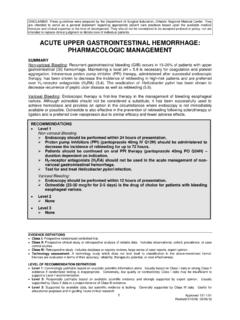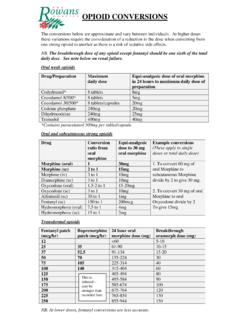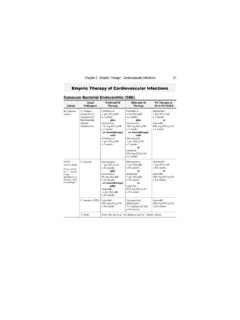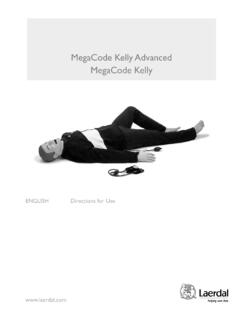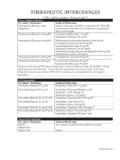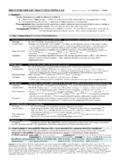Transcription of Acute Spinal Cord Injury (Quadriplegia/Tetraplegia)
1 Acute Spinal cord Injury ( quadriplegia /Paraplegia) Therapy Guideline Final August 1, 2012 Page 1 of 14 Goals for the care of a Spinal cord Injury (SCI) patient: 1. Level of Spinal cord Injury is confirmed and communicated to entire healthcare team 2. The patient will remain free from secondary infections [ventilator-associated pneumonia (VAP) or respiratory infection, bloodstream infection (BSI), and or catheter-associated urinary tract infection (CAUTI)]. 3. The patient will not develop pressure ulcers 4.
2 Promote an environment of safety (adequate method to communicate needs, adaptive call system for nurse, and interventions to prevent falls) 5. Patient and family will receive education regarding Injury and plan of care Trauma Alert / Admission ATLS protocol work-up Airway/Breathing: Assess need for intubation If needed, Rapid Sequence Intubation per ORMC ED protocol with HiLo Evac ET-Tube Sedation & Analgesia (if intubated): Fentanyl drip 50 mcg/h IV continuous titrate to keep SAS 3-4 Lorazepam 1-2 mg IV Q1H prn agitation/anxiety (SAS > 4) Circulation Goal MAP > 70 mmHg Labile response to fluid challenge maximum 2 L NS bolus Norepinephrine mcg/kg/min titrate to keep MAP > 70 Immobilize the spine of all patients with a potential Spinal Injury ACLS protocol if needed Complete detailed history/physical Obtain initial labs.
3 Trauma A, ABG Baseline CXR Baseline EKG Baseline Respiratory Mechanics: NIF, FVC, TV Pain management (non-intubated) : Fentanyl 50-100 mcg IV q1h prn pain OR Morphine 1-5 mg IV q1h prn pain Admission Orders Utilize the Spinal cord Injury Admission Order Set Addresses all systems (respiratory, CV, skin, VTE prophylaxis, GI, bowel regimen, standard ICU orders) In the ED, transfer the patient with potential Spinal Injury as soon as possible off the backboard onto a firm padded surface/mattress while maintaining Spinal alignment Acute Spinal cord Injury ( quadriplegia /Paraplegia)
4 Therapy Guideline Final August 1, 2012 Page 2 of 14 Phase 1 Critical Care Unit (NSICU, TICU, MSICU) Phase 2 De-escalation of Therapy (TSDU, Neuro 8A/C) Neurological Status Goals: Define level of Injury Set a baseline for sensory, motor, & reflex status Consider use of the Rotorest bed for patients who will require prolonged spine immobilization Unstable Spinal injured patients are to be placed on a bed with an Accumax mattress (low air loss mattresses are contraindicated prior to spine stabilization)
5 Once spine is stabilized may place patient on Stryker In Touch bed or low air loss mattress Document sensory, motor, and reflex status within first 24 hours to ICU and then Q24H x 3 days Neurosurgery/Attending to communicate level of Injury to patient and family Basic neuro assessment by nursing per unit protocol Repeat neuro assessments after any transfer for reduction movements Continue current care Basic neuro assessment by nursing per unit protocol Acute Spinal cord Injury ( quadriplegia /Paraplegia)
6 Therapy Guideline Final August 1, 2012 Page 3 of 14 Phase 1 Critical Care Unit (NSICU, TICU, MSICU) Phase 2 De-escalation of Therapy (TSDU, Neuro 8A/C) Respiratory System Goals: Decrease/prevent atelectasis Enhance clearance of secretions Prevent pneumonia Monitoring parameters: (monitor per ICU protocol) Fever (Temperature > C) Change in respiratory rate Increased work of breathing Increased pulse rate Increase or change in secretions (color, quantity, consistency) Declining respiratory mechanics Decrease in SaO2 Monitoring parameters: (per unit protocol) Same as Phase 1 Respiratory & ST to assess need for in-line Passy Muir Valve (PMV) Standard Monitoring Orders: Respiratory: FVC, NIF, TV Q-SHIFT Vital signs per ICU protocol Non-intubated.
7 Incentive spirometer readings Q1H Clear secreations with use of cough assist device. Endotracheal suctioning if unable to clear secretions with cough assist. Standard Monitoring Orders: Respiratory: FVT, NIF, TV Q-SHIFT (decrease to Q24H if stable x 72 hours) Vital signs per unit protocol Non-intubated/trached: Incentive spirometer readings Q1H Ventilator Orders: Mechanical ventilator orders per RT/SCC protocol Consider using higher tidal volumes (10-15 ml/kg) to resolve or prevent atelectasis Begin weaning ventilator per protocol Ventilator Orders.
8 Continue weaning per protocol Consider larger TV ventilation For C1-C4 quadriplegics, consider diaphragmatic pacer placement to facilitate ventilator weaning (Consult Dr. Portee for a phrenic NCS) Standard Respiratory Care for all VENTILATED SCI Patients: VAP protocol ( oral care Q4H, HOB>30 , etc) Peridex oral rinse 15mL swish & suction Q6H Metaneb Q4H Cough Assist device Q4H Fomoterol (Foradil ) 20mcg nebulized Q12H Albuterol nebulized Q4H Abdominal binder when OOB to chair Assess need for respiratory suctioning frequently to avoid mucous plugs Standard Respiratory Care for all VENTILATED SCI Patients.
9 Continue current care If minimal to no secretions, change albuterol to PRN Acute Spinal cord Injury ( quadriplegia /Paraplegia) Therapy Guideline Final August 1, 2012 Page 4 of 14 Phase 1 Critical Care Unit (NSICU, TICU, MSICU) Phase 2 De-escalation of Therapy (TSDU, Neuro 8A/C) Respiratory System (continued) Standard Respiratory Care for all NON-VENTILATED SCI Patients WITHOUT evidence of respiratory compromise/ disease: Monitor for need for mechanical ventilation (respiratory failure, intractable atelectasis on CXR, etc) EZ-PAP Q4H Cough Assist Device Q4H Peridex oral rinse 15mL swish & spit/suction QID PC/HS Albuterol nebulized Q4H prn increased secretions Standard Respiratory Care for all NON-VENTILATED SCI Patients WITHOUT evidence of respiratory compromise/ disease.
10 Discontinue Peridex when patient tolerating PO diet Continue current care Discontinue albuterol if not needed for > 72 hours NON-VENTILATED SCI Patients aggressive protocol WITH history of smoking/respiratory disease OR increased secretions / change in pulmonary function: Assess for need for NT suctioning Discontinue EZ-PAP Metaneb Q4H Cough Assist Device Q4H Peridex oral rinse 15mL swish & spit/suction QID PC/HS Salmeterol (Serevent ) 50mcg inhaled Q12H Albuterol nebulized Q4H Abdominal binder when OOB to chair NON-VENTILATED SCI Patients on aggressive protocol Discontinue Peridex when patient tolerating PO diet Assess for need for NT suctioning Continue current care When improved mechanics, switch Metaneb to EZ-PAP If minimal to no secretions.


